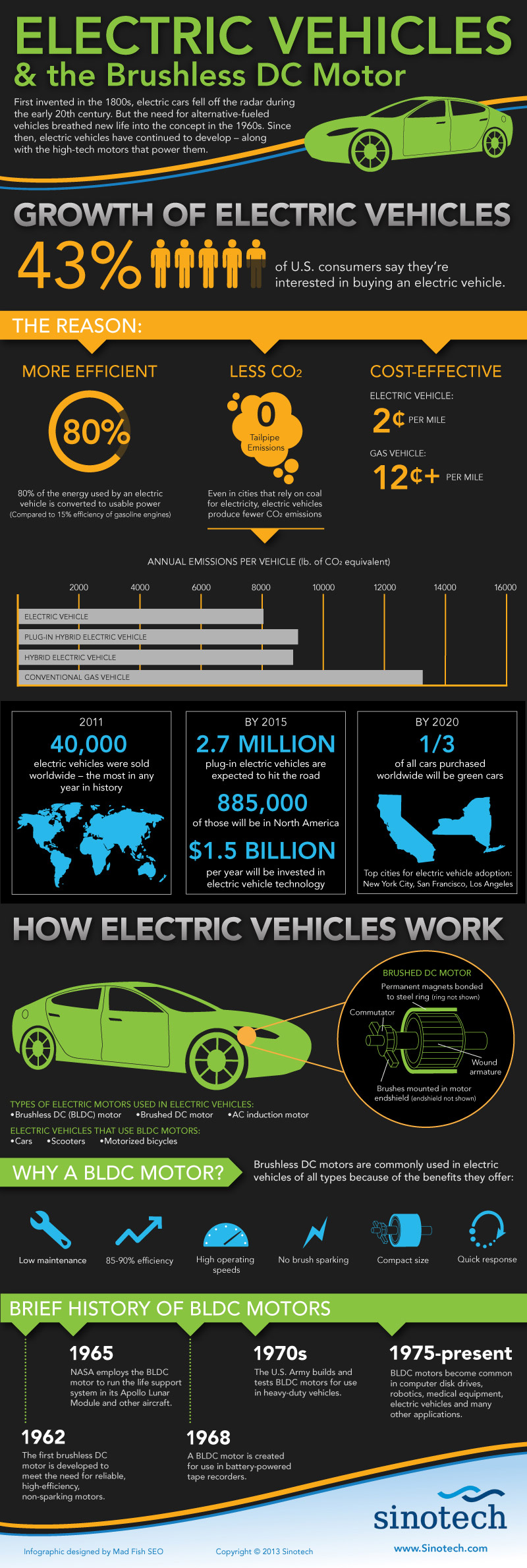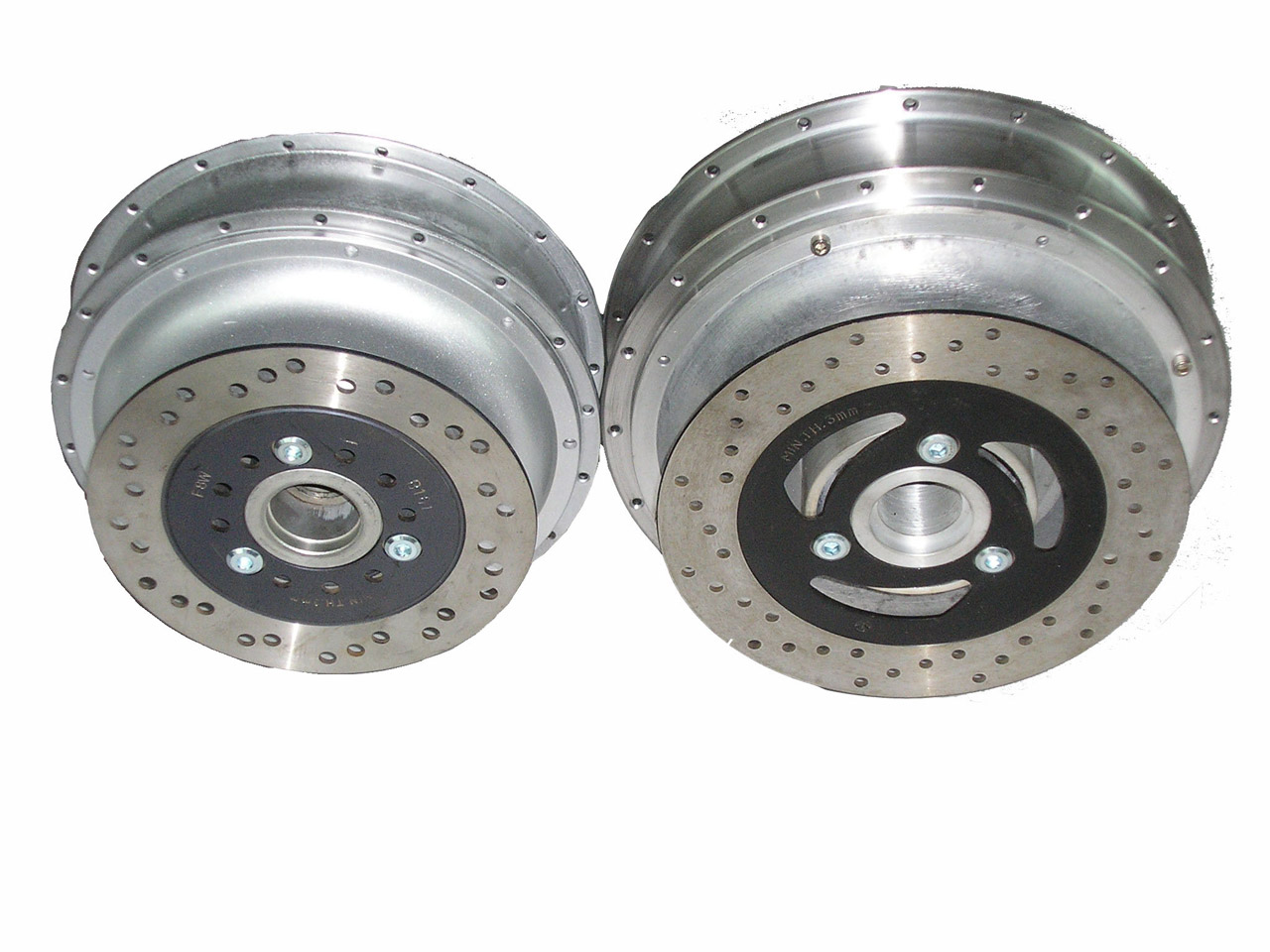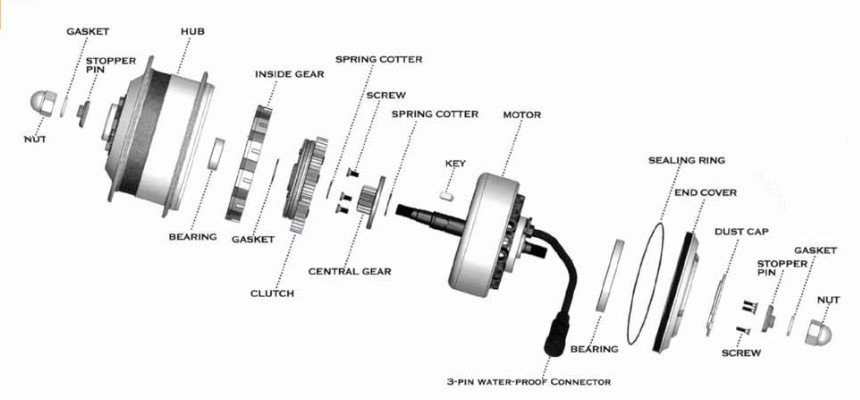The Brushless DC Motor and Its Use in Electric Cars
Electric vehicles were among the first automobiles, and they became wildly popular during the early 1900s Ė in fact, nearly 40% of the cars in the United States were electric at that time.

The lack of electronic control technology limited the speeds of early electric vehicles to 20 miles per hour. Along with a poor recharging infrastructure, the convenience of gasoline-powered vehicles prompted car owners to abandon the electric vehicle. However, technological advances such as the brushless DC motor (BLDC motor) have made these energy-efficient automobiles more viable.
Renewed Interest
Automakers acquired a renewed interest in electric cars in the 1960s; at that time innovations with the brushless DC motor were helping NASA scientists roam the Moon in lunar rovers. The wheels in the moon buggies NASA built each had a BLDC motor in them.
While energy crises in the 1970s and 1980s again piqued interest in electric cars, automakers didnít offer hybrid and electric vehicles to U.S. consumers until the new millennium. The ever-growing cost of gas may explain why more than 40% of U.S. consumers expressed interest in owning an electric vehicle in 2013. With the help of the brushless DC motor, todayís electric cars are:
-
Up to 80% more efficient than traditional cars;
-
Less expensive to drive, at 2 cents per mile (gas-powered cars cost 12 cents or more per mile); and
-
Cleaner, with zero tailpipe emissions.
The Brushless DC Motor (BLDC Motor) in Electric Vehicles
Before the latest incarnation of electric vehicles, cars already used BLDC motors for windshield wipers, CD players, and power windows. Todayís automakers use three different types of electric motors in green cars: the BLDC motor, brushed DC motor, and AC induction motor.
The BLDC motor has a permanent-magnet rotor surrounded by a wound stator. The winding in the stator get commutated electronically, instead of with brushes. This makes the the BLDC motor:
-
Simpler to maintain,
-
More durable,
-
Smaller,
-
85%Ė90% more efficient,
-
Able to respond faster and at higher operating speeds,
-
Simpler to control in regard to speed control and reversing,
-
Lighter,
-
Less prone to the failures that brushed motors experience, and
-
Able to self-start.
The composition of the BLDC motor also keeps the machinery inside a vehicle cooler and thermally resistant. Plus, because the motor is brushless, there is no dangerous brush sparking.
The BLDC Motor Drive

All of todayís hybrid vehicles use a BLDC motor. Green car manufacturers often prefer BLDC motors over the alternatives because the peak point efficiency is higher and rotor cooling is simpler. The motors can also operate at ďunity power factor,Ē meaning the drive can operate at its maximum efficiency levels.
Batteries and brakes. One of the most important components of the BLDC motor drive system is the batteries. In addition to supplying energy to the engine, they allow the electrical receivers to function. Therefore, itís important that the batteries in green cars be as efficient as possible.
Whenever a battery gets used, an irreversible change in the chemical structure occurs. As a result, a rechargeable battery is most efficient when maintained close to full charge. Thanks to the permanent magnets in the brushless DC motor and the ability for the external torque to work as a generator, a person operating a green car can pulse-charge the battery by applying the brakes. Itís important to note, however, that braking alone wonít fully charge an electric carís battery.

Motor response. Green car manufacturers and entities like NASA prefer BLDC motors because of their fast motor responses. The high-performance, small-diameter magnetic rotors reduce the inertia of the armature, allowing high acceleration rates, a reduction in rotational losses, and smoother servo characteristics. This optimal motor response also allows for more constant speeds, instant speed regulation and a quieter drive system.
A Look to the Future
The brushless DC motor isnít without fault. Itís currently more expensive to manufacture than its brushed counterparts. Also, the magnetic field produced by the permanent magnets isnít adjustable. Scientists hope to make the strength of the magnetic field more adjustable so when an electric vehicle requires maximum torque, particularly at low speeds, the magnetic field will be at maximum strength.
As green vehicles continue to grow in popularity, automakers and scientists expect the brushless DC motor to dominate the market. With continuing innovations in electric car manufacturing, economists predict that by the year 2020, up to 33% of new car purchases worldwide will be for green cars.

Michael Bloom
Michael Bloom is president of Sinotech in Portland, Oregon. Sinotech offers a wide range of high quality brushless DC motors as well as custom electric motors built to your design requirements. Sinotech provides custom engineered mechanical products, metal and plastic components, and magnets to a variety of industries and has over 20 years of experience in the industry with engineers personally supervising all tooling and production to ensure quality control.
Website: www.sinotech.com/motors.html



